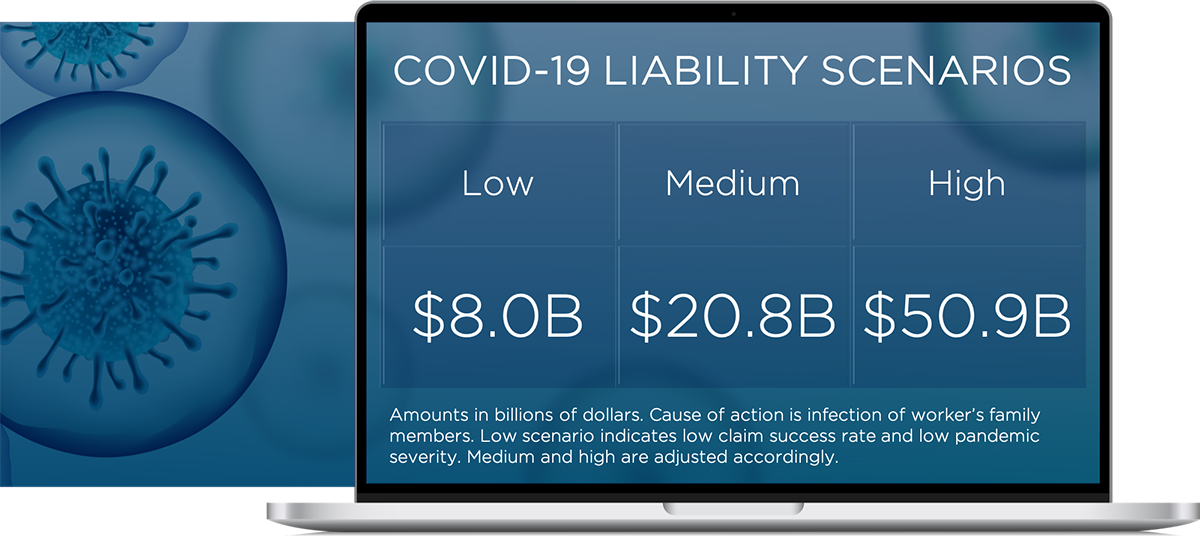Bitesize InsurTech: Praedicat
May 9, 2020 Dougie Willins
This week we caught up with the Praedicat, a risk analytics company for casualty (re)insurers and global corporates, and a Member of our 2020 Impact 25.
The company uses machine learning and natural language processing to mine global peer-reviewed scientific literature and identify and quantify agents or perils with the potential to be subject to mass litigation and become major loss events for (re)insurers. Praedicat’s technology allows insurers to quantify liability exposures in their portfolios, and drill down to the level of industry and company.
Their team has been busy in recent weeks developing a set of COVID-19 litigation scenarios to help (re)insurers understand their US Casualty exposure, and to assist them with understanding, quantifying and managing their portfolio risk.
Covid-19
Later this month Praedicat will launch a COVID-19 scenario modelling solution which contains a set of litigation scenarios, representing a range of ultimate pandemic outcomes and with fully specified causes of action, numbers of plaintiffs, and defendant industries. Praedicat is also launching a litigation tracker for COVID-19 based on accessing state and federal court docket information.

The first Praedicat scenarios, to be released next week, assume that liability risk arises whenever transmission of COVID-19 occurs in a commercial setting, and particularly when a business may have negligently failed to take appropriate precautions to protect their workers, customers and their families. The exposure at work is typically workers’ compensation, and exposure as a customer is exceedingly hard to prove, but due to high intrafamily spread of COVID-19, Praedicat models the risk that infected family members of a worker exposed at work bring claims against the worker’s employer. Approximately 15% of deaths have resulted from intrafamily transmission to workers’ families. These types of claim have the risk of involving a wide range of industries, and may also involve significant defence costs, resulting in tail risks to (re)insurers.
Praedicat’s clients will be able to run the scenarios against 40,000 U.S. companies in its software. In coming months, Praedicat will also release workers’ compensation COVID-19 model. To further assist their clients Praedicat is also launching an unprecedented COVID-19 litigation tracker, which will mine the court dockets of all 50 states, the District of Columbia and US federal courts. Clients will directly access the data, while Praedicat develops additional scenarios around novel causes of action to provide a dynamic exposure assessment tool. Estimates will also be updated, and the range of outcomes narrowed as the pandemic experience is increasingly revealed.
Praedicat has received positive early feedback on its COVID-19 scenarios with insurers claiming it is the only provider that can accurately estimate their US Casualty exposure to the pandemic.
More on Praedicat
Praedicat was spun out of the RAND Corporation in 2012. The objective was to identify methods to predict the ‘next asbestos’ and provide modelling and technology solutions for (re)insurers. Following its successful participation in the 2019 Lloyd’s Lab accelerator, Praedicat has big plans for 2020.
In addition to the COVID-19 response, the team are working on creating new insurance products based on its analytics which uses AI and machine learning. Praedicat are also using this technology and these solutions to build a whole new liability insurance risk transfer market.
The Oxbow Partners view
As the COVID-19 crisis unfolds there will be an unprecedented volume of legal cases raised against employers and business large and small. These businesses will turn to their insurers for financial reprieve.
For insurers, the current crisis has the potential to become the largest mass tort event since Asbestos but with claims contained to a much shorter timeframe. They now face the immense challenge of forecasting their exposure to the pandemic against an evolving backdrop of political and legal policy making.
The complexity of this challenge is likely beyond the capabilities of insurers in-house teams. Therefore, we believe that insurers will increasingly seek help from third parties such as Praedicat to provide the solutions.

